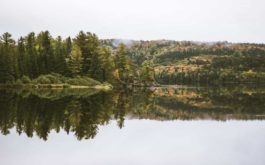Do you like riddles?
Enjoy solving puzzles?
Do you like the sound of Pokemon Go but aren’t really a Pokemon fan?
Luckily, there’s a craze sweeping across both the United States and Canada called “geocaching”. This fun and exciting adventure isn’t new to the world and has in fact been around for nearly two decades! However, with the rapid advancement of technology and the ability to use a cell phone pretty much anywhere you go, North America has rapidly become a giant playground for kids and adults alike!
What do you need to get started?
- A cell phone
- A reliable provider that offers cell reception in the most remote places
- A friend (optional)
- Supplies e.g. water, running shoes/hiking boots, food and paper
So what is Geocaching?
So what exactly is geocaching? The concept might seem a little strange at first but it all starts by downloading the ‘Geocaching’ app which is available on the play store and app store. It’s literally that simple! Create a free account, turn on your GPS and you’re ready to begin!
The purpose of geocaching is incredibly straight-forward. On the app, you will be presented with a map of your area. On this map you will see a number of different symbols. For example, the green icon represents a traditional cache, a light blue icon represents a mystery cache, and a yellow or orange icon is a multi-cache.
But what exactly is a cache? In computing terms, a cache is software or hardware that stores data, usually temporarily. These caches are similar but are non-digital. Here are the basic steps for finding your first cache (as well as what to expect when you find one):
1. Once you’ve made your account and turned on your GPS, you can click on a cache icon near your location. The app will give you directions on how to reach the cache area.
2. Once you reach the area, you have to search for the cache itself. Some of these can be incredibly tricky to find! Typically, the app will offer you a riddle to solve that is related to the location of the cache. For example, the clue might be “don’t fall” and the cache may be hidden behind a sign that warns people to watch out for the ledge.
Finding the Cache
3. Finding the cache is made trickier by the varying sizes. You’re almost always looking for a container of some type but this could be the size of a matchbox or it could be a small chest. Similarly, it could be hidden under a rock, buried, held behind something with a magnet, or any other number of scenarios.
4. Once you find the cache, you can open it up and see what’s inside! Many people leave trinkets which you can either add to or trade with for one of your own. Most caches also contain a list which includes information about geocachers who have already found this cache. This will usually include their name, the date they found it and sometimes where they are from. You may also find business cards or friendly messages inside.

Leave a contribution
5. Add your name to the list, leave your trinkets (if you decide to) and then return the cache to the same place that you found it.
6. Update your geocache profile by announcing to the community that you successfully discovered your first cache! Take a photo of you holding the cache or simply leave a comment letting others know that it’s still there (sometimes the caches are stolen).
7. Choose your next location and set off!
One of the most exciting aspects of geocaching is the range of locations, cache sizes and the treasures hidden within. Some caches include prizes, some are marked on your map as events but overall, it allows us to fulfil our childhood dreams of hunting for buried treasure. You can take this a step further by hiding your own geocache! Simply find a container of some sort, hide it in a clever location and mark it in the app.









